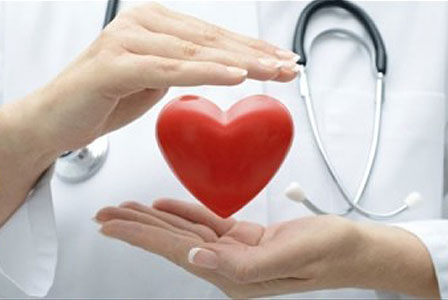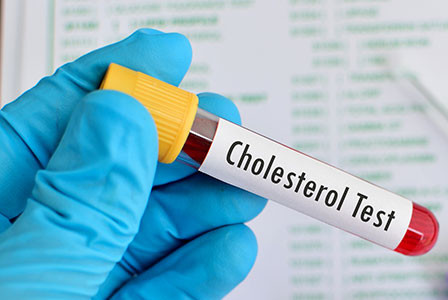When should I get my cholesterol checked?
How often you have your cholesterol level checked depends on your age, family history and what other risk factors for heart disease you have.
If you have no cardiovascular risk factors, routine screening most often starts at the age of 40 for men and 50 for women.
If your cholesterol is up, as with an FH diagnosis, your family doctor can also advise you when to have follow-up cholesterol levels done.
How is cholesterol checked?
Cholesterol levels are checked with a blood test either by using a needle inserted into the vein in your lower arm or a prick to the fingertip.
Your doctor will decide your target levels based on your risk factors for cardiovascular disease.
What are the cholesterol targets?
Your doctor will decide your target levels based on your risk factors for cardiovascular disease. Following are average targets. Note that your doctor will decide what is best for you.
Ideal LDL cholesterol level: Less than 3.0 mmol/L
Ideal HDL: Above 1.0 mmol/L
If you are at low risk: LDL cholesterol should be less than 5.0 mmol/L and total cholesterol HDL-C ratio should be less than 6.0
If you are moderate risk: Your LDL cholesterol should be less than 3.5 mmol/ and total cholesterol HDL-C ratio should be less than 5
If you are high risk: Your LDL cholesterol should be less than 2.0 mmol/L and total cholesterol HDL-C ratio should be less than 4.0. An HDL cholesterol level of less than 1.0 mmol/L means you're at higher risk for heart disease.
If you have diabetes: LDL should be less than 2.0 mmol/L.
If you have had a heart attack: Your LDL should be less than 2.0 mmol/L.

Heart Tests
The tests you'll need to diagnose your heart disease depend on what condition your doctor thinks you might have.
No matter what type of heart disease you have, your doctor will likely perform a physical exam and ask about your personal and family medical history before doing any tests.
Patient Tip: Worried about why you were referred for a test? It’s completely normal to feel a little anxious. Bring a friend, partner, or relative with you.
They may not be able to come into the testing room with you for all of the tests, but you can be comforted knowing they are sitting just outside the door, waiting for you.
Besides blood tests and a chest X-ray, tests to diagnose heart disease can include:
Electrocardiogram (ECG). An ECG records these electrical signals and can help your doctor detect irregularities in your heart's rhythm and structure. You may have an ECG while you're at rest or while exercising (stress electrocardiogram).
Holter monitoring. A Holter monitor is a portable device you wear to record a continuous ECG, usually for 24 to 72 hours. Holter monitoring is used to detect heart rhythm irregularities that aren't found during a regular ECG exam. This exam includes an ultrasound of your chest, shows detailed images of your heart's structure and function.
Stress test. This test involves raising your heart rate with exercise or medicine to see how well your heart responds.
Cardiac catheterization. In this test, a short tube (sheath) is inserted into a vein or artery in your leg (groin) or arm. A hollow, flexible and longer tube (guide catheter) is then inserted into the sheath. Aided by X-ray images on a monitor, your doctor threads the guide catheter through that artery until it reaches your heart.
Cardiac computerized tomography (CT) scan. In a cardiac CT scan, you lie on a table inside a doughnut-shaped machine while an x-ray tube inside the machine rotates around your body. While it’s rotating around your body, it gathers images of your heart and chest.
Cardiac magnetic resonance imaging (MRI). For this test, you lie on a table inside a long tube-like machine that produces a magnetic field. The magnetic field creates pictures to help your doctor assess your heart.


